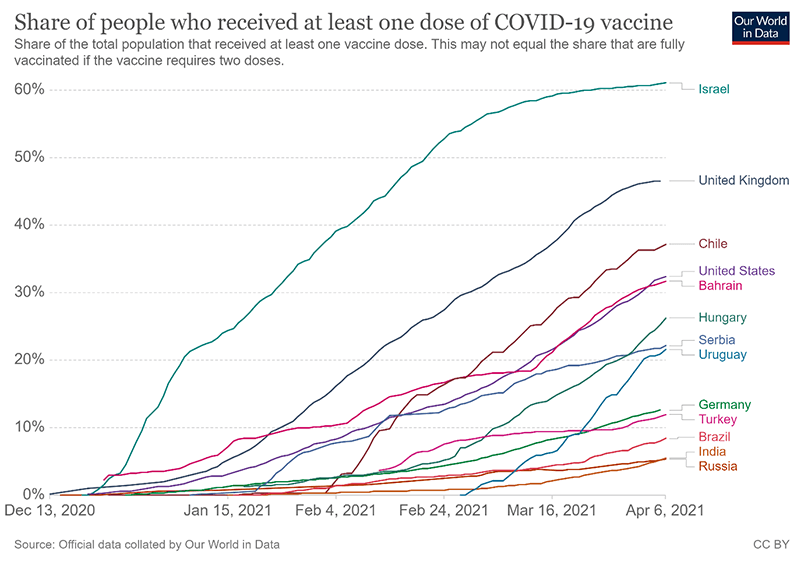We’re in the middle of one of the most disruptive pandemics in human history, so it seems very timely to be talking about the supply chain of vaccines. Vaccines have been around for 200 years, and there have been numerous examples of vaccines saving lives worldwide. However, there have been several supply chain hurdles that have hindered a smooth supply of vaccines. So, while dealing with the current pandemic, let’s take a step back and unravel these supply chain complexities.
As the first leg of the supply chain of vaccines, which includes researching, experimenting, human trial tests and getting approval, is done, let’s shift our focus to the next leg of the supply chain of vaccines – Manufacturing. This starts with ensuring there’s sufficient capacity allocated to manufacture the vaccine doses. Several well-equipped agencies are working on manufacturing approved vaccines.

The next leg of the supply chain is allocation and distribution. The manufactured vaccines are perishable products with a limited shelf life and require an ideal temperature between two and eight degrees Celsius. Decisions involving packaging, syringes and needles need to be in sync. Discussions on multiple doses system and signing the deal with government agencies and health care service providers are vital before getting it to the final consumer.
The biggest problem after testing and approval is getting the vaccines to the public and ensuring it is administered to everyone without any problem. In India, less than 10% of the population have received the first dose, whereas around 30% of the people in the US have received their first dose of vaccination.


1. Automated Quality Checks for better SCM
Logistics hubs conduct manual quality inspections for damage during transit on containers or packages of medicines or vaccines. The increment of Artificial Intelligence and Machine Learning application in the SCM industry have increased the scope of automating the quality inspections in the supply chain lifecycle.
Automated analysis of defects in industrial equipment is possible using Machine Learning-enabled techniques. The automated analysis can check for damages in the vaccine production and the vaccines via image recognition. The benefit of these power automated quality checks results in reduced chances of delivering defective or faulty vaccines and equipment to the respective customers.
2. Streamlining Production Planning
Most countries have facilities dedicated to and specialized in produce certain vaccines for certain diseases. Suppose any of these facilities only invest in vaccine manufacturing for COVID-19. In that case, they might not be able to use the same resources in the future once the need for COVID-19 vaccines declines considerably. Hence governmental funding is essential for private manufacturers to take up the challenge.
Machine Learning can play an effective role in optimizing the complexity of production plans. With already available production data and training effective algorithms. Machine Learning models and techniques can be applied to obtain an optimal solution where the whole country can get vaccinated in a way that helps identify and minimize inefficiency and waste.
3. Warehouse Management
Warehouse and inventory-based management and effective planning in Supply Chain Management (SCM) have similar functionalities. With a vaccine production company’s latest demand and supply information, Machine Learning has a vast scope in maximizing the efforts to get every individual vaccinated at the lowest cost.
Machine Learning, with its models, techniques, and forecasting features, can also solve under and overstocking problems and increase warehouse management efficiency.
4. Reduction in Forecast Errors
Large sets of data need to be processed, and insights need to be derived for the best course of action. This is critical, especially for efficient Vaccine-SCM. Machine Learning works as a robust analytical tool and helps vaccine-supply chain companies process large sets of data. Apart from this, Machine Learning in the vaccine-supply chain also ensures that the insights derived will have great diversity and scalability. This is achieved through telematics, IoT applications, intelligent transportation systems, and other similar powerful technologies, enabling vaccine companies to have much better insights and help them achieve accurate forecasts.
Smaller steps can lead to more significant change, which can create a huge impact. Here’s how ML, when implemented in the smaller stages of vaccine-SCM, can help achieve the goal of ‘vaccination for every individual’.
Sourcing
Sourcing related problems like delivery promising and order sourcing are primary areas where Data Science, Machine Learning have scope for application in the SCM.
- Delivery Promising
Millions of people require vaccines every day worldwide. The vaccine centres established worldwide should be provided with an estimated delivery date once the specific region/area demand is known. An algorithm in the backend is going to calculate the date based on many existing data insights, including:- The distance between the vaccine centre and vaccine manufacturing/production centres
- Inventory levels of the vaccines at the manufacturing/production centres
- Available shipping methods and capacity to send the vaccines at the right time without any damage all over the country, with every small region, covered
- Order Sourcing
Whenever an order is placed (after the initial set of doses are completed by the centre, they have to order again, as the vaccines have a short shelf life and unique storage temperatures), the supply chain management systems then need to determine the following:- Which Vaccine Production Centre is the optimum one to fulfil order requests from vaccination centres
- To choose a suitable carrier while minimizing transportation cost and meeting the delivery date
Transportation
Transportation is another SCM area where data science techniques can be successfully applied.
- Lane Planning
A shipping label is created after a shipment has been picked up and packed according to the guidelines. Packages are sorted based on the label information and placed near the outgoing door at the production centres. According to the production facility, carrier, shipping/transportation method, and sometimes destination vaccination distribution facility, a lane is defined. Millions of vaccines are packed and processed daily to meet the growing demand, but they need to reach the destinations on as-promised delivery dates. This can be achieved by implementing ‘Gurobi Optimization’, which is widely used to solve linear, quadratic and other complex programming problems. It helps in optimal decision making by proper planning, allocation and scheduling the scarce resources.
Many other areas in SCM can be optimized by using Machine Learning, which can help effectively distribute the vaccines worldwide.
Improving the efficiency of the vaccine supply chain plays a crucial role in speeding up the distribution process of vaccines worldwide. Dealing with SCM-Volatility and Demand Forecasting problems has been made easier by using Machine learning techniques. However, to obtain the full benefits of Machine Learning, governments and supply chain industries need to invest in ML and related technologies to get the vaccine to every individual worldwide at the right time.
Source – 1 https://ourworldindata.org/grapher/cumulative-covid-vaccinations?time=earliest..2021-03-18



